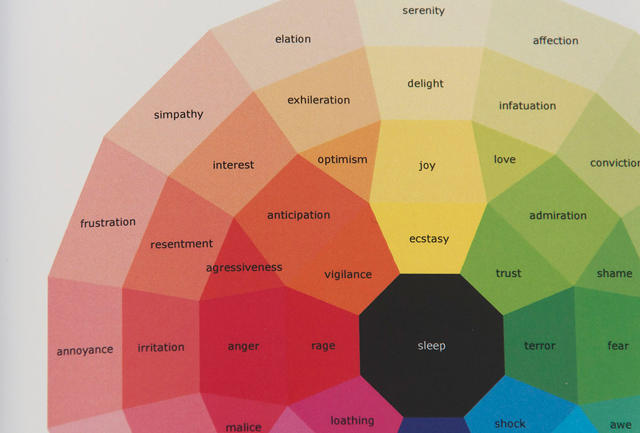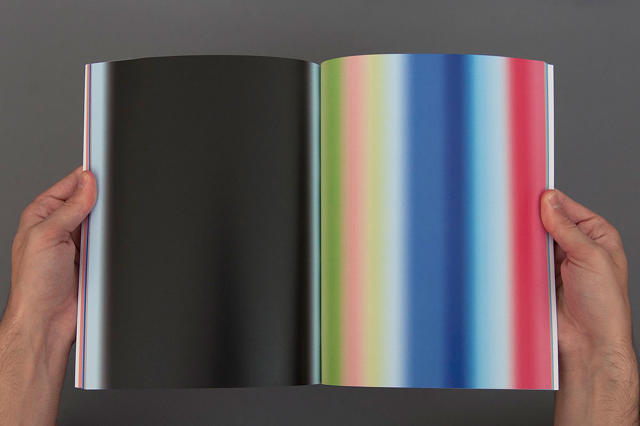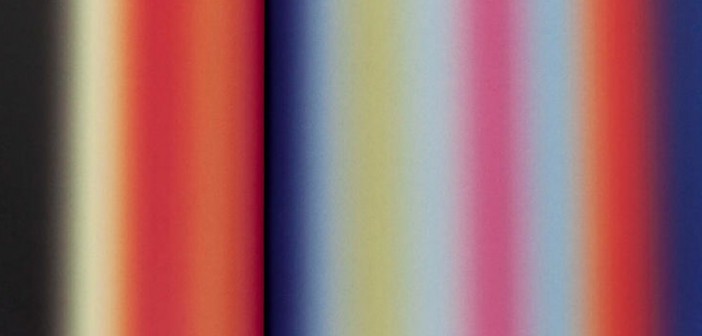This Designer Turned A Year’s Worth Of Emotions Into Colorful Spectrums
Even after years of therapy and mindfulness, many of us have difficulties mastering the full spectrum of our emotions. Portuguese designer Giestas decided to turn it into a data visualization problem, He recorded his emotions every hour for 300 days, then turned them into a trilogy of color-coded diaries, each page of which represents his emotional spectrum for a 24-hour period.
The key to Giestas‘s visualization, called Soft Cover Emotions, is the emotional matrix, which he compiled himself from a combination of psychological models. With a black pit of sleep at its center, the matrix contains dozens of emotions, from bright pink loathing to pale green bewilderment. Generally speaking, the emotions are organized so that different degrees of the same emotion (e.g. terror, fear, apprehension, and uneasiness) all share a color and a line with each other, with less intense feelings represented as less saturated hues.

Printing himself out a sheath of these matrixes, Giestas proceeded to take a marker to them. For every hour he was awake the first 100 days, Giestas checked off the block that best described how he was feeling. The resulting charts make up the first volume of Soft Cover Emotions. Each page of this volume shows 24 rainbow-hued bands arrayed chronologically, a simple representation of Giestas‘s emotional spectrum for the day.
But it’s in the second and third volumes of Soft Cover Emotions where this concept gets really interesting. For the second 100 days of his experiment, Giestas recorded not only what emotion he was feeling, but what emotion he was expressing every hour of the day. For example, if Giestas was at the office, and he was feeling angry, he might have to put a smile on his face anyway. So the second volume of Soft Cover Emotions shows two rainbows per spread, putting into sharp relief the often profound differences between his inner and outer emotional life.

The third volume adds another dimension. Instead of just recording his emotions, Giestas tried to remember how he was feeling 24 hours previously, as well as predict how he would feel 24 hours later, with anything he couldn’t predict or recall captured in white.
According to Giestas, the Soft Cover Emotions project started as an exercise for dealing with the designer’s own problems with anxiety. Over time, though, the concept expanded to cover all his other emotions. “The exhaustive and repetitive process of recording [my emotions]ended up inspiring other issues,” he says.
If the rest of us are anything like Giestas, the expression of our feelings, how we are constantly surprised about what we expect to feel, or our capacity to remember our feelings after they happened, our emotional spectrums are more profoundly in flux than we’re probably aware.
[All Photos: via Giestas]

